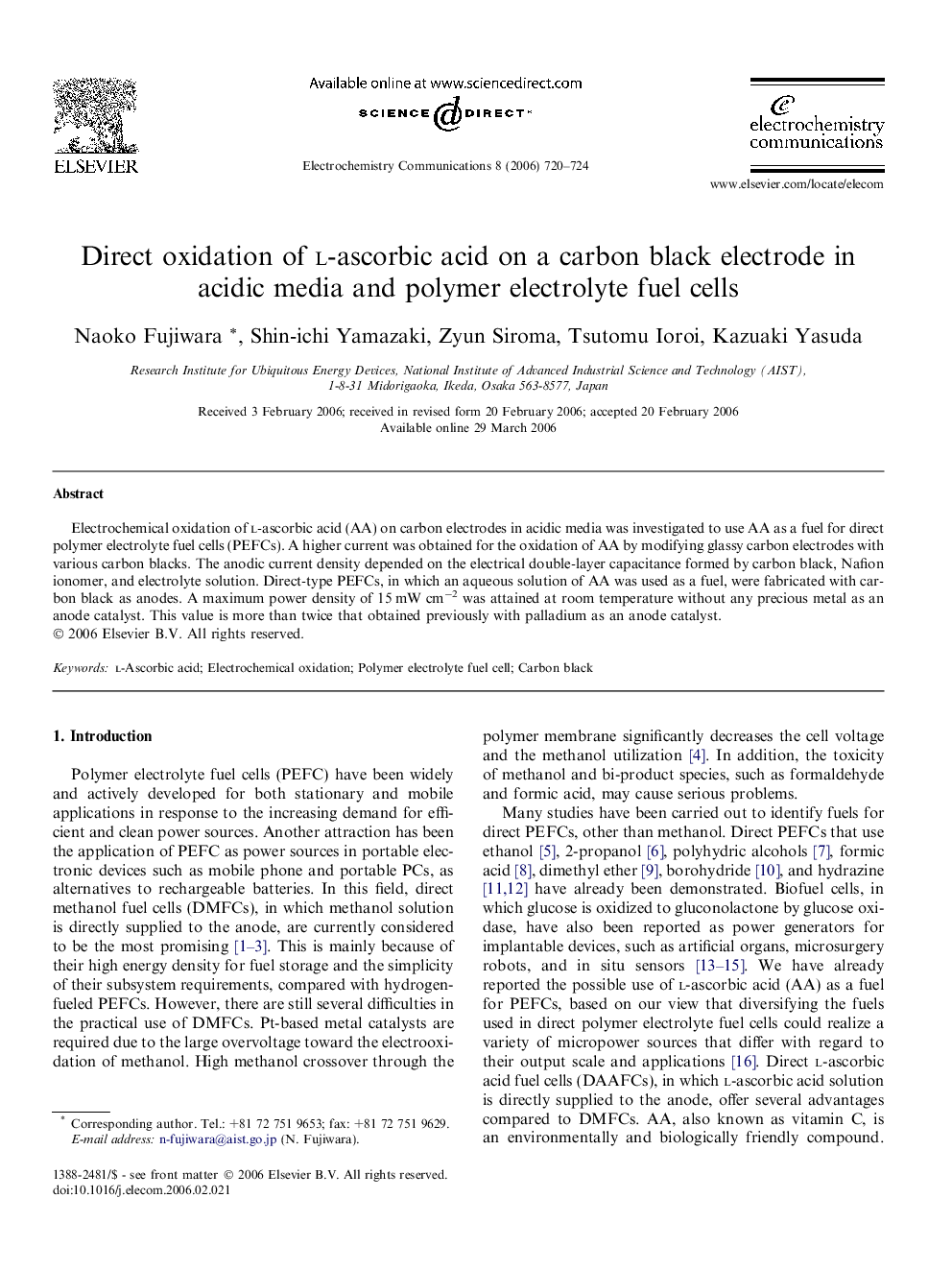| Article ID | Journal | Published Year | Pages | File Type |
|---|---|---|---|---|
| 182667 | Electrochemistry Communications | 2006 | 5 Pages |
Electrochemical oxidation of l-ascorbic acid (AA) on carbon electrodes in acidic media was investigated to use AA as a fuel for direct polymer electrolyte fuel cells (PEFCs). A higher current was obtained for the oxidation of AA by modifying glassy carbon electrodes with various carbon blacks. The anodic current density depended on the electrical double-layer capacitance formed by carbon black, Nafion ionomer, and electrolyte solution. Direct-type PEFCs, in which an aqueous solution of AA was used as a fuel, were fabricated with carbon black as anodes. A maximum power density of 15 mW cm−2 was attained at room temperature without any precious metal as an anode catalyst. This value is more than twice that obtained previously with palladium as an anode catalyst.
